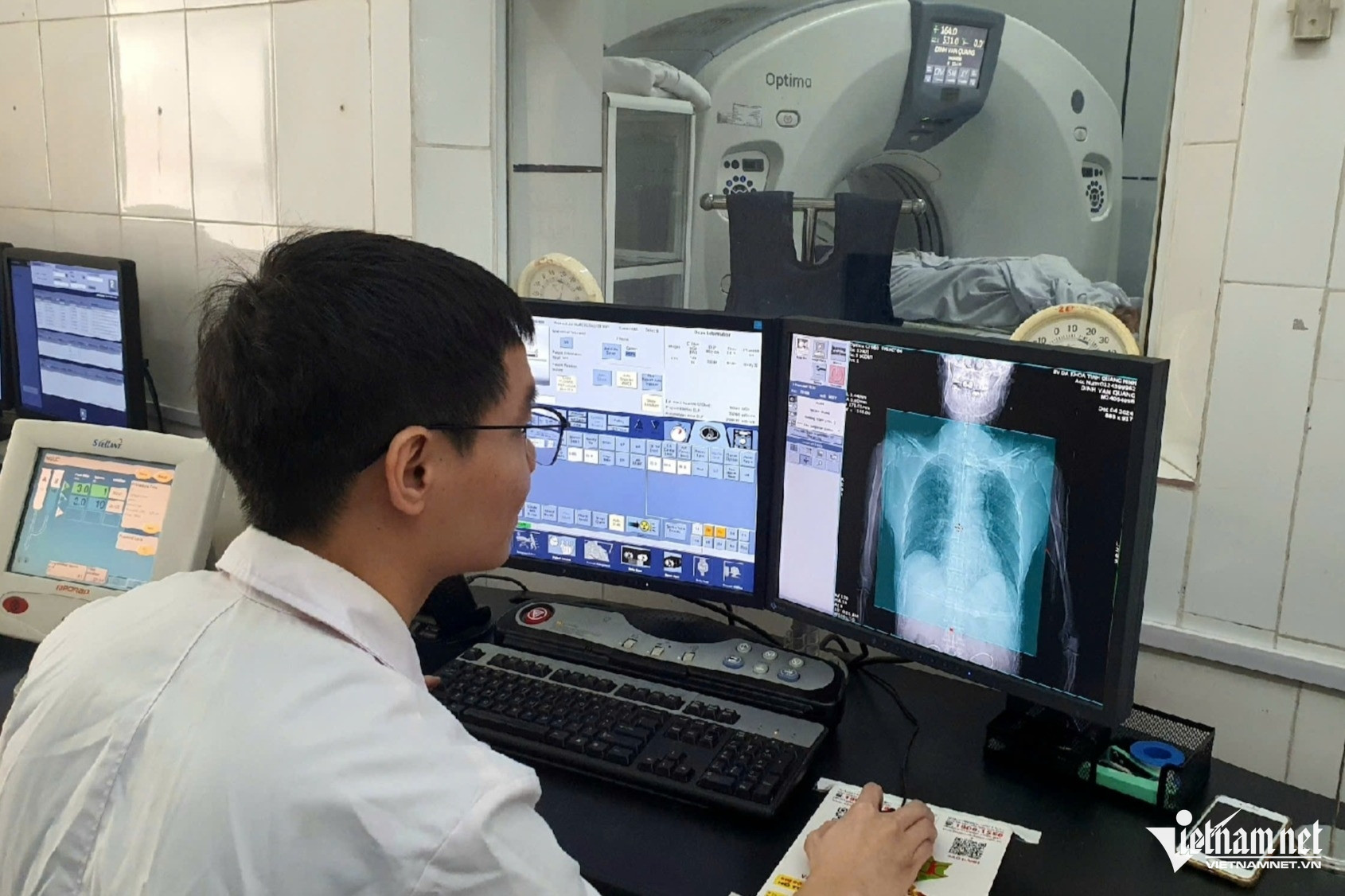
According to the Ministry of Health, in 2023, Vietnam recorded around 40 million imaging scans, costing 1.5 trillion VND (approximately 60 million USD) in film printing.
By replacing physical film with a digital storage and transmission system (PACS), hospitals could save between 1,000 to 1,500 billion VND (40 to 60 million USD) annually.
Under a national directive from the Government and the Ministry of Health, all hospitals must fully implement electronic medical records (EMRs) by September 30. Yet, as of May, only about 180 out of more than 1,700 hospitals have announced they’ve stopped using paper records in favor of EMRs.
A key component of EMRs is PACS (Picture Archiving and Communication System). However, many hospitals using PACS are not reimbursed for diagnostic imaging services if they do not provide printed film, due to the lack of a payment policy.
Still printing despite going digital
Dr. Bui Trong Quynh, Deputy Director of Phu Tho Obstetrics and Pediatrics Hospital, said that using EMRs and PACS helps reduce paper use, cut operational and storage costs, and is environmentally friendly.
Patients can view their scan results on phones or computers using QR codes, apps, or direct links instead of receiving physical film.
However, due to insurance policies requiring printed film for reimbursement, many hospitals still print film - even after switching to electronic records.
In Phu Tho, a single district medical center spends over 1.1 billion VND annually on printing film. Bach Mai Hospital, one of Vietnam’s largest, spends around 70 billion VND yearly on film and another 3 billion VND on ink.
According to data from Vietnam Social Security, the total cost of film printing in 2023 reached 1.5 trillion VND. Switching entirely to PACS could save at least 1,000 - 1,500 billion VND a year.
Hospitals now face a “double cost” dilemma: maintaining expensive film printing operations alongside the technology costs of PACS (including IT infrastructure, maintenance, and film bags costing 3,000-6,000 VND each).
New proposal aims to reduce costs and benefit patients
Currently, only 26 medical facilities are part of a pilot program where PACS-based services are reimbursed by health insurance without needing printed film. For other hospitals, insurance reimbursement still requires film.
In a draft decree submitted to the government on May 7, the Ministry of Health proposed a policy for reimbursing diagnostic imaging services without printed film under health insurance.
The ministry is developing technical and economic benchmarks to create a pricing structure for PACS-based services. In the interim, it proposes reimbursing hospitals based on the current imaging fee minus 50% of the film cost.
For example, a chest X-ray currently costs 64,000 VND, including 26,000 VND for film. If PACS is used, the hospital would receive 51,000 VND from insurance, with 13,000 VND allocated for software, equipment, and staff.
A general hospital director in Hanoi expressed support, saying the new policy could reduce not only film purchase costs and waste from printing errors but also logistical costs like film bags. It would benefit patients by speeding up diagnostic procedures.
For instance, an X-ray previously took about five minutes to perform and print; with PACS, it takes just two minutes - saving three minutes per case. This allows hospitals to serve more patients and improve satisfaction.
Patients also avoid carrying bulky film bags and don’t worry about storage. Digitized images enable more accurate consultations and are better preserved against environmental damage.
Vo Thu